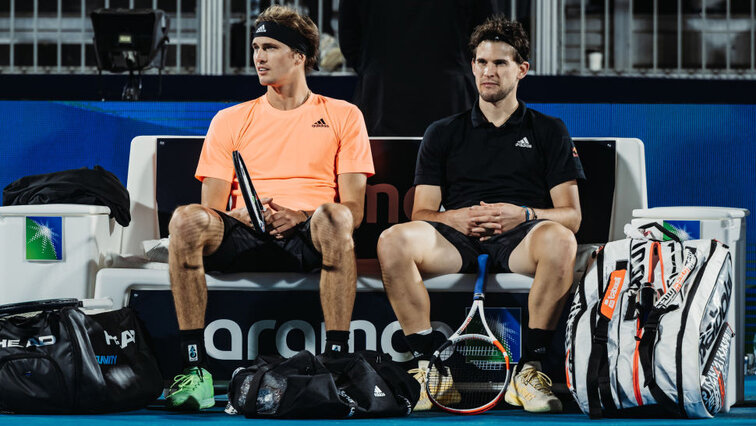Dominic Thiem, Alexander Zverev and the depth of the square
Dominic Thiem and Alexander Zverev are currently having problems getting back on track for various reasons. But one thing unites the two: the mostly very defensive position on the court.
by Jens Huiber
last edit:
Feb 18, 2023, 08:16 am

When Dominic Thiem and Rafael Nadal played an Instant Classic in Flushing Meadows 2018 that lasted late into the night, the TV commentators said that the two opponents were in different postcode areas when the game was opened: the server was naturally standing on the baseline, but the receiver was so far behind that he could already whisper to the linesman about the course of the match.
So it is by no means the case that a deep position on the return is only chosen when self-confidence is suffering a little, as is currently being diagnosed by some observers in Dominic Thiem and Alexander Zverev. No, that evening Thiem and Nadal were in the prime of their creative power - and with most setbacks they were still close to the gang.
The difference, however: In the rallies, there was usually a race to see who would be the first to find their position on, on or even in front of the baseline. And thus can dominate the rally. Exactly this aspect is missing at the moment for long stretches in the appearances of Thiem and Zverev.
Thiem and Zverev too rarely in an offensive position
The German let himself be pushed back too far in round two by Rotterdam after winning the first set by Tallon Griekspoor after he had still pursued his balls in round one. And Thiem was far too rarely embarrassed to set the right pace against Juan Pablo Varillas in Buenos Aires. The Peruvian made sure of that with his explosive forehand, which didn't always find the target, but often enough.
Far back, the distances are simply too long. And some saves, such as Dominic Thiem's stop, have far less chance of success if they are not played from close to the baseline.
What to do? It's not as if Alexander Zverev and Dominic Thiem, no matter how different their current situations are, would shut themselves off from the idea of an offensive approach to the game. But maybe the two world-class professionals are just a little bit as human as the average hobby player: Of course, they also know that they should move right up to the net. And still remains reliably at the T-line.
